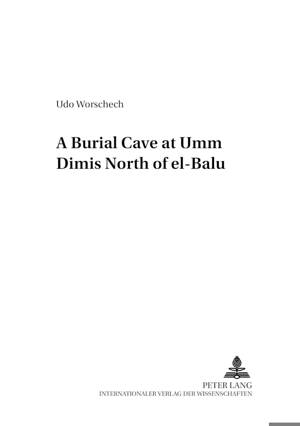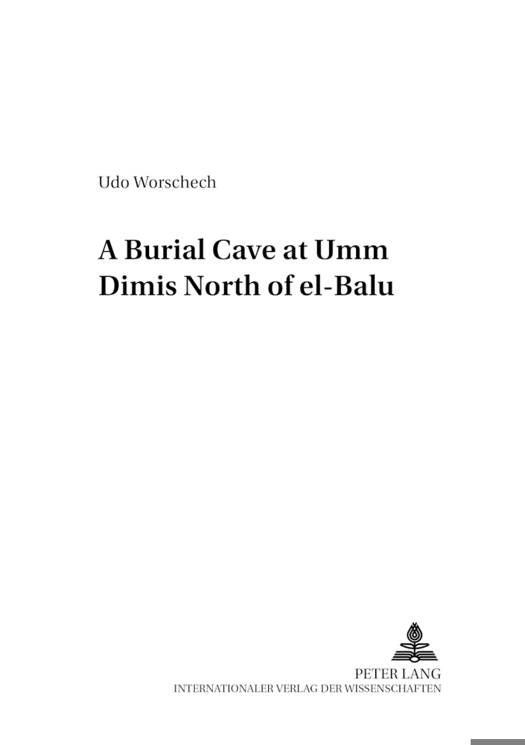
Door een staking bij bpost kan je online bestelling op dit moment iets langer onderweg zijn dan voorzien. Dringend iets nodig? Onze winkels ontvangen jou met open armen!
- Afhalen na 1 uur in een winkel met voorraad
- Gratis thuislevering in België vanaf € 30
- Ruim aanbod met 7 miljoen producten
Door een staking bij bpost kan je online bestelling op dit moment iets langer onderweg zijn dan voorzien. Dringend iets nodig? Onze winkels ontvangen jou met open armen!
- Afhalen na 1 uur in een winkel met voorraad
- Gratis thuislevering in België vanaf € 30
- Ruim aanbod met 7 miljoen producten
Zoeken
Omschrijving
In the spring of the year 2000, north of the Iron Age site of el-Bālūc, the present-day inhabitants of the area (known as Umm Dimis) discovered a burial cave containing numerous receptacles and objects from the various settlement epochs of the northern Arḍ el-Kerak. The examination of the burial cave, its further excavation, and the preparation of drawings and photographs of the artifacts then took place in the summers of 2001 and 2002. The burial cave consists of two chambers connected with each other by a narrow corridor about one meter wide, and with the surface by a small opening in the first and a widened opening in the second chamber. Because this discovery is the first relatively widely varied collection of nearly whole vessels in the northern Arḍ el-Kerak - ranging from the early Bronze Age to the late Iron Age III - it is very important that these pieces of pottery and associated artifacts are accessible to the archaeological research in Transjordan. However, in the light of future research and insight the comments on the individual vessels will deserve amendment.
Specificaties
Betrokkenen
- Auteur(s):
- Uitgeverij:
Inhoud
- Aantal bladzijden:
- 210
- Taal:
- Engels
- Reeks:
- Reeksnummer:
- nr. 3
Eigenschappen
- Productcode (EAN):
- 9783631398357
- Verschijningsdatum:
- 9/09/2003
- Uitvoering:
- Paperback
- Formaat:
- Trade paperback (VS)
- Afmetingen:
- 297 mm x 210 mm
- Gewicht:
- 809 g

Alleen bij Standaard Boekhandel
+ 162 punten op je klantenkaart van Standaard Boekhandel
Beoordelingen
We publiceren alleen reviews die voldoen aan de voorwaarden voor reviews. Bekijk onze voorwaarden voor reviews.











